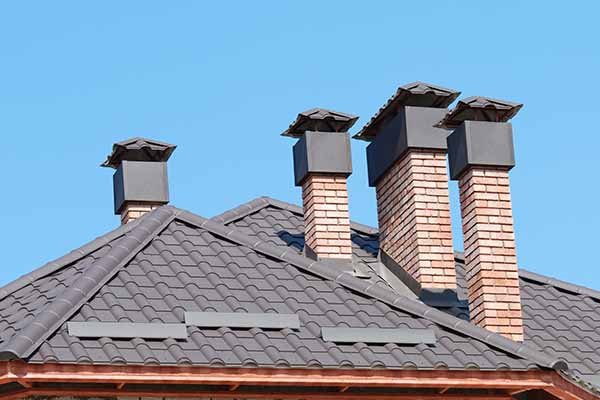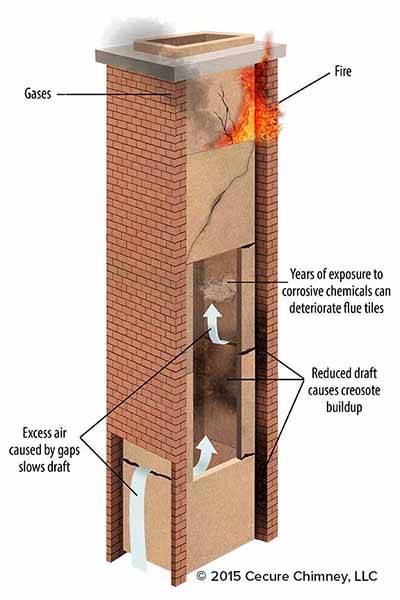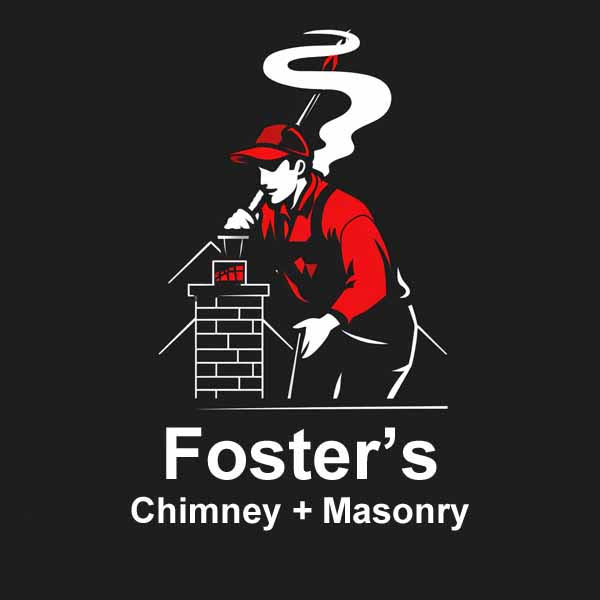HeatShield Authorized Installer
Foster’s Masonry + Chimney Sweep is an authorized Heatshield installer in Columbus, Ohio and Carrol, Ohio.
Your Local HeatShield Authorized Installer
Your chimney may look good on the outside, but have hidden dangers on the inside. Damaged chimney liner? HeatShield® can restore your chimney’s clay flue liner and save you the expense of rebuilding or relining with a stainless steel chimney liner. HeatShield is a chimney liner repair system that eliminates the hazards and draft problems caused by gaps, cracks and spalling in otherwise sound masonry chimneys.
Professionally Applied by Factory Trained Chimney Technicians
HeatShield Cerfractory Flue Sealant is a professionally applied product available through our factory trained New Buck chimney professionals. You can rest assured that your chimney is in good hands! Find out why our technicians prefer HeatShield Cerfractory Flue Sealant.
Chimney Repair Performance Test Findings
The HeatShield® Cerfractory® Flue Sealant was found to be compliant with all aspects of this outline of investigation for chimney repair and proven effective for restoring the original integrity of a chimneys ability to contain and convey the products of combustion to the outside. In addition to the HeatShield®/CeCure Sleeve product listing to UL 1777, HeatShield® Cerfractory® Flue Sealant is effective for repair of masonry chimneys that service most gas-fired, oil-fired, and solid-fuel-fired residential-type appliances.The HeatShield® Cerfractory® Flue Sealant and CeCure Sleeve Liner System is available through a network of factory trained, independent installers.


About HeatShield Cerfactory Technology
Developed in Europe over 20 years ago, HeatShield's® proprietary Cerfractory® technology is a hybrid ceramic/refractory material. It combines the strength of a high fired ceramic with the heat resistance of high temperature refractory cement. HeatShield® Cerfractory® Flue Sealant is supplied as a dry powder that is mixed with tap water immediately before use. Once applied, the product air cures to a hard ceramic like material that is moisture and corrosion resistant. The unique Cerfractory® technology maintains its physical shape and chemical properties even when subjected to high temperatures.
Chimney Repair Performance Testing
Various ASTM and other performance tests were conducted at Intertek Testing and Orton Materials Testing and Research Center to investigate HeatShield's effectiveness for restoring damaged and deteriorated fireclay lined flues in masonry chimneys.An outline of investigation was developed and followed using various ASTM tests and the UL 1777 Standard for Chimney Liners as a guideline. Because there are no published listings or listing requirements for clay flue tile or repair systems, it is important that any prescribed remedies be tested within the systems they are intended to repair.
About Your Chimney
Whether your masonry chimney is used to vent a fireplace, woodstove or furnace, most have sections of clay flue tile stacked one on top of the other to form a liner called the flue.The flue liner should be tightly sealed to protect the integrity and efficiency of your chimney. But over time, hidden dangers can develop that will compromise the safety and efficiency of your chimney.
Gaps Between Flue Tiles
The combustion process creates noxious gases that can contain creosote/soot, carbon monoxide and corrosive chemicals. The purpose of your chimney is to safely vent these hazardous flue gases from your home. Flue tiles are typically sealed with mortar to keep these gases within the flue. But over time, the mixture of heat, moisture and chemicals will erode the mortar, leaving gaps or voids between flue tiles.
Cracked Flue Tiles
Flue tiles can crack due to “sudden occurrences” such as a previous chimney fire, lightning strike, or seismic event. Cracks may also be caused by poor workmanship or the ongoing settling of your home.
Flaking Flue Tiles (Spalling)
Years of exposure to corrosive chemicals and moisture from combustion can attack clay flue tiles, causing pieces of the flue liner to flake off or delaminate, a process called spalling.
Chimney Safety Institute of America (CSIA)
According to the CSIA (csia.org), problems such as gaps, cracks and spalling in your chimney's flue can present serious risks to your home and family, because your chimney can no longer perform its intended function - to safely contain and vent the products of combustion to the outside.
Building Codes
Building codes and fire standards require that chimneys are structurally sound, durable, smoke tight and capable of conveying flue gases to the outside completely and safely.
National Fire Protection Association (NFPA)
If the flue liner in a chimney has softened, cracked or otherwise deteriorated so that it no longer has the ability to contain the products of combustion (i.e., heat, moisture, creosote, and flue gases), it shall be removed and replaced, repaired or relined..." NFPA 211-Standard for Chimneys, Fireplaces, Vents and Solid Fuel-Burning Appliances (2006).

Fire & Health Risks
These defects, no matter how small, can begin a process that will further erode the chimney and can pose a threat to your family’s health. When heat, moisture and gases escape through gaps and cracks in your chimney, they can deteriorate your chimney from the inside out.
More importantly, the gaps and cracks can cause health risks, by allowing poisonous gases to escape into your home. Combustible creosote or soot can also escape through these openings and build up outside the flue liner. If the creosote catches fire in this area of your chimney, serious damage can occur, because the fire can no longer be contained within the flue.
Pieces of flue tile that flake off due to spalling can form dangerous blockages within your chimney. New Buck can apply HeatShield to restore your chimney.
Loss of Efficiency
Chimneys, to work correctly and efficiently, must be gas tight and free of gaps and cracks. Gases rising up through your chimney are similar to liquid being sipped through a straw. If the straw has a crack or hole in it the liquid will not flow effectively through it.
Gaps and cracks allow excess air into your chimney, slow the updraft and make it harder for smoke and gases to rise up and out. Hence, the fireplace, wood stove or furnace will perform poorly, resulting in the loss of heat efficiency.
